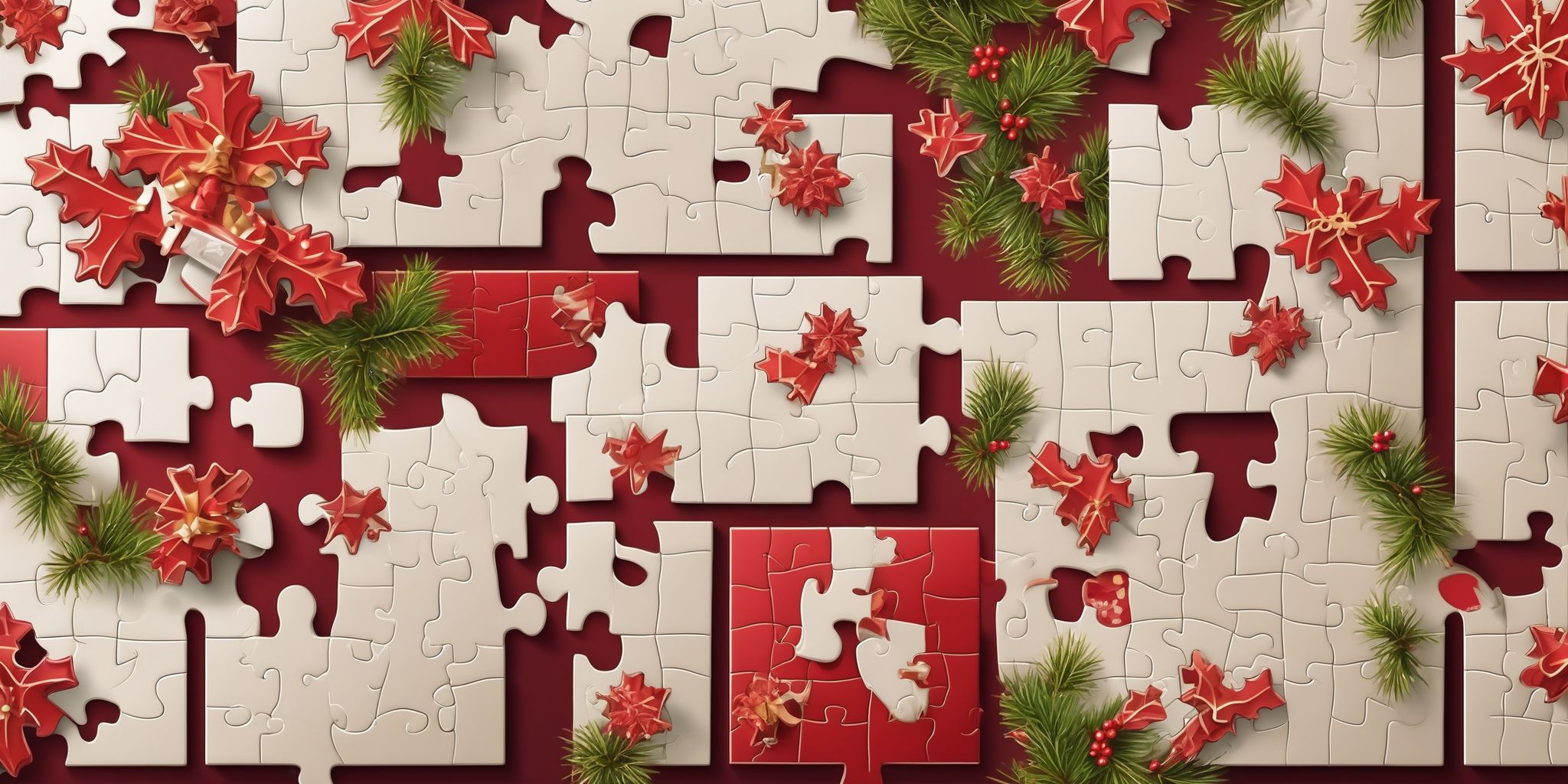- Blog
- Christmas eve
- Curious Minds Want to Know: Answering Christmas Eve Questions

As the first snowflakes fall gently from the sky and carol melodies fill the frosty air, Christmas Eve magically embraces curious minds with a myriad of twinkling questions. From the origins of Santa Claus to the reason behind hanging stockings, the holiday season sparks a flurry of queries in young and old minds alike.
Join us as we embark on an enchanting journey to satisfy the inquisitive spirits, unravel the mysteries, and reveal the fascinating tales behind our beloved Christmas Eve traditions. Prepare to satiate your thirst for knowledge and unlock the secrets hidden within this whimsical holiday wonderland.
The Importance of Curiosity during Christmas Eve
During Christmas Eve, curiosity takes center stage as people eagerly anticipate the celebration. Embracing curiosity allows us to explore the traditions, customs, and stories surrounding this special day. It encourages us to ask questions about the origin of Christmas Eve, the significance of certain rituals, and the meaning behind holiday symbols.
By nurturing curiosity, we deepen our understanding of this festive occasion, enriching our experiences and creating lasting memories with loved ones. Whether it's discovering the history of exchanging gifts or unraveling the mystery of Santa Claus, curiosity fuels our desire to learn and engage in the magic of Christmas Eve. So, let your curiosity guide you on this joyful journey of discovery.
Overview of Christmas Eve Traditions and Customs
Popular Christmas Eve Questions
Why is Christmas Eve celebrated?
Christmas Eve is celebrated worldwide as the evening before Christmas Day. Its significance lies in both religious and cultural customs. For Christians, it marks the anticipated arrival of Jesus Christ's birth. Many attend Midnight Mass or church services to honor this occasion. Apart from religious observances, Christmas Eve is a time for families to come together, exchange gifts, and enjoy festive meals.
The atmosphere is often filled with excitement and anticipation as children eagerly awaitthe arrival of Santa Claus. The celebration of Christmas Eve varies across cultures, showcasing unique traditions and activities. From lighting candles to singing carols, Christmas Eve holds a special place in the hearts of those who celebrate the holiday season.
Exploring the historical significance of Christmas Eve
Exploring the historical significance of Christmas Eve offers fascinating insights into the origins of this cherished tradition. While Christmas itself is a celebration of the birth of Jesus Christ, Christmas Eve holds its own importance. Historically, it was believed that Jesus was born at midnight, making Christmas Eve the precursor to the joyful festivities of Christmas Day. This historical link showcases the reverence and anticipation associated with Christmas Eve.
Today, many families gather on this evening to attend religious services, exchange gifts, and share a special meal together. Understanding the historical roots of Christmas Eve adds depth and meaning to our modern-day celebrations.
Understanding the religious and cultural aspects of Christmas Eve
- Christmas Eve holds great significance in Christianity as it commemorates the birth of Jesus Christ.
- It is marked by religious services, such as Midnight Mass or candlelight vigils, where believers come together to celebrate the birth of Christ.
- In many cultures, Christmas Eve is also steeped in rich traditions and customs that vary around the world.
- Different countries have unique practices, such as lighting Advent candles, setting up Nativity scenes, or participating in caroling.
- These religious and cultural aspects of Christmas Eve add depth and meaning to the holiday, fostering unity and a sense of community.
How is Christmas Eve different from Christmas Day?
Christmas Eve and Christmas Day each hold their own significance in the holiday season. While Christmas Day is the main event, Christmas Eve sets the stage for the celebrations to come. It is often seen as a time of anticipation and preparation. On Christmas Eve, families gather to attend religious services such as Midnight Mass and partake in special traditions like opening one present or sharing a festive meal.
In contrast, Christmas Day is typically reserved for gift-giving, spending time with loved ones, and enjoying the festivities. While the two days are closely linked, Christmas Eve has a unique atmosphere all its own, building excitement and setting the tone for the ultimate celebration of Christmas.
Comparing the traditions and customs of both days
When comparing the traditions and customs of Christmas Eve and Christmas Day, it's evident that each day holds its own significance. Christmas Eve is often associated with anticipation and preparation, with activities such as attending church services, exchanging gifts with loved ones, and enjoying festive meals.
On the other hand, Christmas Day is centered around celebrating the birth of Jesus and spending time with family, often involving elaborate meals, gift exchanges, and festive gatherings. While Christmas Eve sets the stage for the joyful celebrations of Christmas Day, it is important to recognize and appreciate the distinct traditions and customs of both days to fully experience the spirit of the holiday season.
Highlighting the unique atmosphere and activities on Christmas Eve
On Christmas Eve, a distinct ambiance fills the air, setting it apart from other nights of the year. Families often come together to engage in meaningful traditions, creating a sense of anticipation and warmth. Activities such as decorating the Christmas tree, baking festive treats, or watching beloved holiday movies contribute to the unique atmosphere. Some families attend Midnight Mass or church services, embracing the religious aspect of the occasion.
What are some popular Christmas Eve activities?
- Attending Midnight Mass or church services is a cherished tradition for many families on Christmas Eve. It provides a sacred and reflective start to the celebration.
- Exchanging gifts or opening one present is a common practice on Christmas Eve, adding excitement and anticipation for the main day.
- Family gatherings and feasts play a central role, with loved ones coming together to share a special meal and create lasting memories.
- Decorating the Christmas tree and hanging stockings is often done on Christmas Eve, bringing the festive spirit into the home.
- Watching Christmas movies or listening to holiday music is a cozy and enjoyable activity for families to bond and immerse themselves in the season's joy.
Exploring the tradition of attending Midnight Mass or church services
Attending Midnight Mass or church services is a cherished Christmas Eve tradition for many. It provides an opportunity to reflect on the religious significance of the holiday and come together as a community. The serene ambiance of a candlelit service can create a sense of peace and spirituality. It also allows individuals to reconnect with their faith and focus on the true meaning of Christmas amidst the busy festivities.
Whether it's participating in carol singing, listening to a sermon, or partaking in communion, these services offer solace and a chance to deepen one's spiritual connection during this special time of year.
Discussing the practice of exchanging gifts or opening one present
- Many families have the tradition of exchanging gifts or allowing each family member to open one present on Christmas Eve.
- This activity adds excitement and anticipation to the festive atmosphere.
- It allows loved ones to share in the joy of giving and receiving gifts before the main celebration on Christmas Day.
- Opening a present on Christmas Eve can create a special moment and build up anticipation for the next day.
- Some families have specific rules or traditions around the gift exchange, such as drawing names or setting a price limit.
- This practice adds an element of surprise and can make Christmas Eve even more memorable and enjoyable for all.
Highlighting the importance of family gatherings and feasts
Highlighting the importance of family gatherings and feasts on Christmas Eve, it's a time for loved ones to come together and create lasting memories. Sharing a meal and exchanging stories deepens the sense of togetherness and strengthens family bonds. Whether it's preparing traditional dishes or trying new recipes, the act of cooking and dining together fosters connection and fosters a sense of belonging.
From setting the table with festive decorations to sharing laughter and cherished traditions, these shared experiences on Christmas Eve create a warm and joyful atmosphere that is treasured by family members of all ages.
Answering Kids' Christmas Eve Questions
Is Santa Claus real?
Is Santa Claus real? This question often arises on Christmas Eve, especially among young children. The belief in Santa Claus is a cherished tradition in many cultures, symbolizing the spirit of generosity and the joy of giving. While Santa Claus may not be a tangible individual, he represents the embodiment of the holiday season's magic and kindness. Children are encouraged to believe in Santa Claus as part of the enchantment of Christmas.
The belief fosters imagination, wonder, and the joy of receiving surprises. Whether or not Santa exists as a physical being, the joy and happiness that come from the belief in his existence make the holiday season special for many families.
Explaining the legend and belief in Santa Claus
The legend of Santa Claus has been passed down for generations, captivating the hearts of children around the world. The belief in Santa Claus stems from the magical idea that a jolly man in a red suit flies on a sleigh pulled by reindeer, delivering gifts to children on Christmas Eve. This belief fosters a sense of wonder and excitement during the holiday season. Parents often play a role in perpetuating the myth, finding joy in seeing their children's faces light up with excitement on Christmas morning. The legend of Santa Claus teaches children about generosity, kindness, and the joy of giving, making it an integral part of the Christmas Eve tradition.
Addressing different viewpoints and opinions on Santa Claus
Addressing different viewpoints and opinions on Santa Claus is essential in fostering open-mindedness and encouraging exploration of diverse perspectives. Some individuals firmly believe in the existence of Santa Claus, attributing magical qualities to his ability to deliver presents worldwide in one night. Others view Santa Claus as a symbol of generosity and the spirit of giving, irrespective of his physical existence.
It is important to respect and listen to different viewpoints, allowing for meaningful discussions that can inspire curiosity and empathy. By understanding and appreciating various perspectives on Santa Claus, we can promote inclusivity and create a more accepting and understanding holiday atmosphere.
How does Santa Claus deliver presents to all the children in the world in one night?
One of the most intriguing Christmas Eve questions is how Santa Claus manages to deliver presents to all the children around the world in just one night. While it may be challenging to fathom, the magic and mystery surrounding Santa's rapid gift-giving abilities captivate both children and adults alike. Theories suggest that Santa leverages time dilation techniques, utilizing his own version of time travel, or receives assistance from his team of dedicated and efficient elves.
While the specifics remain unknown, the enchantment of Santa's overnight deliveries adds to the joy and wonder of Christmas.
Exploring the magic and mystery behind Santa's gift-giving abilities
Exploring the magic and mystery behind Santa's gift-giving abilities is a beloved topic of discussion on Christmas Eve. While the exact logistics remain unknown, many theories exist to explain how Santa manages to visit all the children in the world in one night. Some suggest that Santa has a supernatural ability to manipulate time, allowing him to travel swiftly. Others propose that he employs advanced technologies or relies on a network of helpers.
Regardless of the explanation, the enchantment of Santa's gift-giving serves as a reminder of the wonder and joy that the holiday season brings.
Discussing theories and explanations for Santa's speedy delivery
Discussing theories and explanations for Santa's speedy delivery on Christmas Eve can be a fascinating topic. One theory suggests that Santa utilizes time dilation, allowing him to complete his journey in a shorter time from his perspective. Another theory proposes that Santa harnesses advanced technology, such as wormholes or teleportation, to travel swiftly between homes.
While these theories may be intriguing, it's important to remember that Christmas magic often defies conventional explanations. The focus should be on the joy and excitement that Santa's visit brings, rather than the logistics behind his delivery. After all, the wonder of Christmas lies in embracing the magical possibilities of the holiday season.
Why do we leave milk and cookies for Santa?
Why do we leave milk and cookies for Santa? This tradition dates back to the Great Depression when families wanted to teach children the importance of gratitude. Leaving refreshments for Santa became a way to show appreciation for his generosity. Today, it has become a beloved tradition in many households, symbolizing kindness and hospitality. It's an opportunity for families to come together and share in the joy of giving.
Whether it's milk and cookies or another treat, the gesture represents the spirit of Christmas and the joy of giving without expecting anything in return.
Explaining the tradition and symbolism of leaving treats for Santa
Leaving treats for Santa Claus on Christmas Eve is a beloved tradition for many families. It's an act of gratitude and excitement, as children believe that Santa will enjoy the snacks while he delivers presents. This gesture symbolizes hospitality and generosity. By offering milk and cookies, families partake in an age-old exchange, expressing appreciation for the gifts received. The tradition varies around the world, with some cultures leaving different treats like hot cocoa or sweets. Regardless of the specific foods, the act of leaving treats for Santa adds to the magic and anticipation of Christmas Eve for children everywhere.
Sharing different cultural variations in food offerings for Santa
In different cultures around the world, the food offerings for Santa Claus on Christmas Eve may vary.
For example, in some countries, children leave out a glass of milk and cookies for Santa, symbolizing hospitality and gratitude. In other cultures, traditional Christmas desserts like mince pies, gingerbread, or fruitcake are offered to Santa. Some countries also have unique traditions, such as leaving out rice cakes in Japan or porridge with butter in Scandinavia. These varied food offerings reflect the diversity of Christmas traditions and add a touch of cultural richness to the holiday season.
Wrapping up
Christmas Eve is a time of wonder and curiosity for many people. People have various questions about Christmas Eve, from the origins of Santa Claus to the reason we hang stockings by the fireplace. This article aims to provide answers to these common questions and shed light on the traditions and history behind them. So, for all the curious minds out there, this article holds the secrets to the questions you've been dying to ask about Christmas Eve.
Read On

Exploring the Fascinating History of Christmas Eve and Its Evolution
Christmas Eve, that enchanting night when the world becomes a wonderland of anticipation and...

How do different cultures and religions celebrate Christmas?
Christmas is a time of joy, merriment, and festivity that transcends borders and brings people...

Celebrating the Christmas Eve Holidays Around the World: A Cultural Perspective
Ah, the enchanting time of year has arrived once again - Christmas Eve! As the world prepares to...